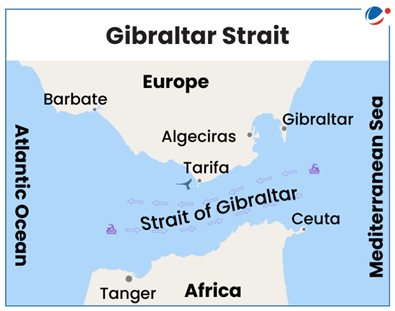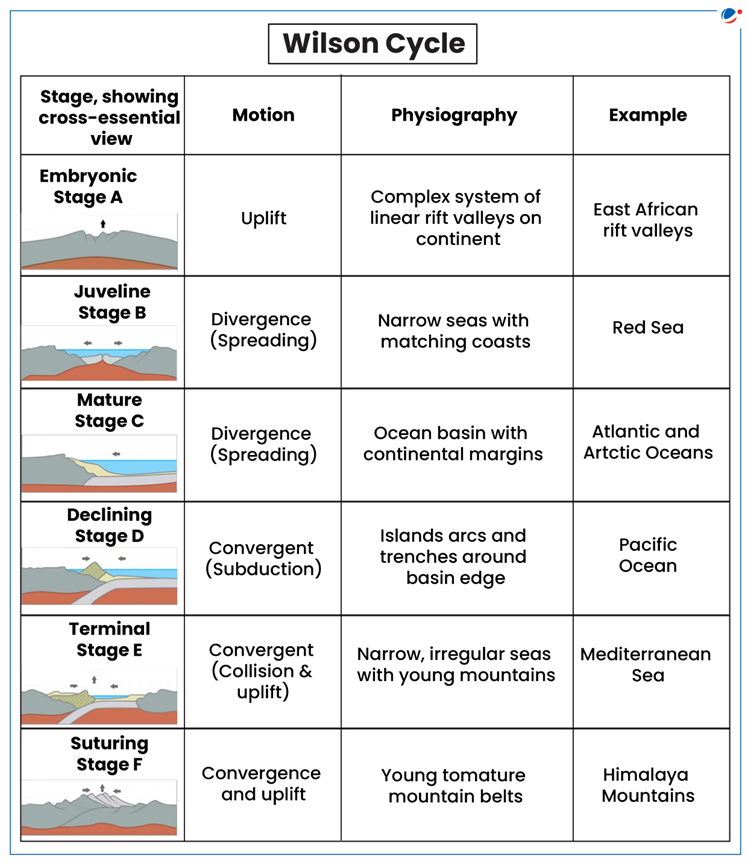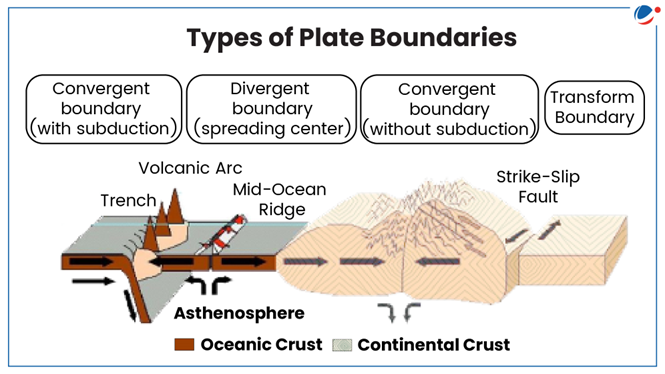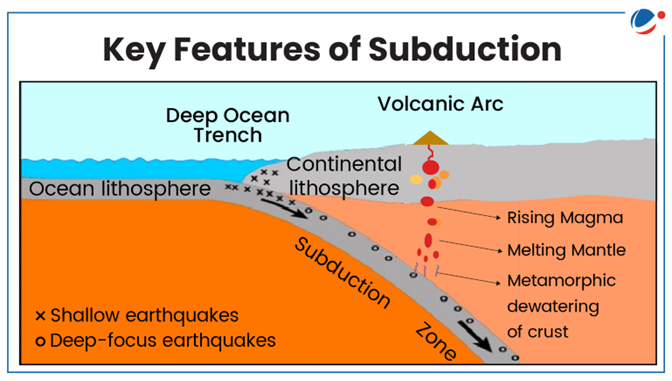Why in the News?
Portuguese scientists have predicted that the subduction zone beneath the Gibraltar Strait may lead to the Atlantic Ocean’s closure in 20 million years, reshaping the planet's geological landscape.
More on the news
- Subduction zone in mature Atlantic-type oceans that have formed from the breakup of a supercontinent is believed to be difficult.
- This is because the aged oceanic lithosphere is thick and strong, making it resistant to breaking and bending (both are prerequisites for the start of subduction in an ocean surrounded by passive (no-subduction) margins).
- The Atlantic Ocean already has two subduction zones, the Lesser Antilles and the Scotia arcs.
- The third zone, Gibraltar Arc, is another place where a subduction zone is invading the Atlantic, although its activity is debated.
- The Gibraltar Arc System is located within the plate boundary zone that separates Nubia (NW Africa) from Iberia (SW Europe), marking the western termination of the Mediterranean belt.
- The Gibraltar Strait, a 10-mile gap separating Europe and Africa, marks the meeting point of the Eurasian Plate and the African Plate.
- The African Plate is currently subducting beneath the Eurasian Plate in this region, leading to seismic events and earthquake risks.
- The third zone, Gibraltar Arc, is another place where a subduction zone is invading the Atlantic, although its activity is debated.

Key-Findings of the Study
- According to the latest study, the Gibraltar subduction is still active and it will propagate further into the Atlantic after a period of inactivity.
- Despite the slow movement of the subduction zone beneath the strait, experts believe it could grow and extend into other parts of the ocean, a phenomenon known as 'subduction invasion'.
- The study indicates that the subduction zone will progress westwards through the Gibraltar Strait, forming a new Atlantic subduction system referred to as the 'Ring of Fire'.
- This process, similar to the Pacific Ocean's Ring of Fire, involves the gradual pulling of the ocean floor beneath the continents, leading to the closure of the ocean basin.
- This is a cornerstone of the Wilson cycle (repetitive opening and closing of ocean basins due to the seafloor spreading and subduction respectively).

About Subduction Zone
- According to the Plate Tectonics theory, the Earth is made up of number of lithospheric plates (~100 km thick) those float on the hot and ductile asthenosphere.
- These plates are classified into three plate boundary types respectively, based on their movement:
- Convergent Boundary (towards each other)
- Divergent Boundary (away from each other)
- Transform Boundary (slide past each other)
- These plates are classified into three plate boundary types respectively, based on their movement:

- Subduction Zone
- When two plates converge towards each other, one plate which is heavier in density subducts (subducting plate) below the lighter plate (over-riding plate or stationary plate) and is consumed or destroyed in the mantle. The zone where subduction occurs is called as Benioff Zone.
- For e.g., Subduction zones occur in a horseshoe shape around the edge of the Pacific Ocean, offshore of Washington state, Canada, Alaska, Russia, Japan and Indonesia and down to New Zealand and the southern edge of South America.
- Called the "Pacific Ring of Fire," these subduction zones comprise “the most seismically and volcanically active zone in the world,” responsible for more than 80% of the world's biggest earthquakes and most of the planet’s active volcanoes.

Conclusion
The findings of the study shed light on the dynamic nature of Earth's tectonic processes and the long-term evolution of ocean basins. The concept of the Atlantic Ocean shrinking and potentially ceasing to exist over a vast timeframe offers a glimpse into the geological forces shaping our planet.







